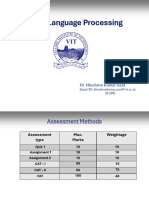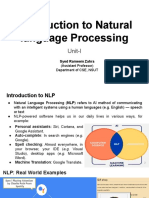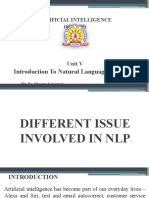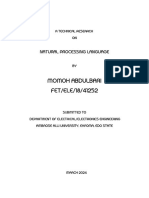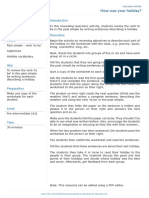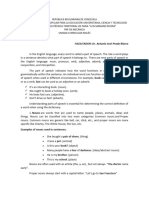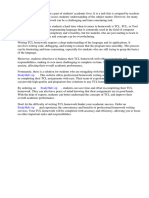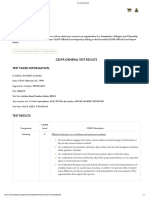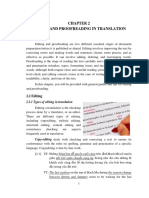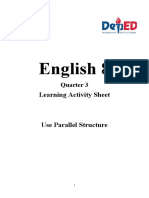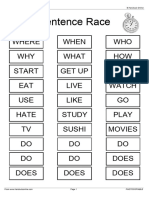0% found this document useful (0 votes)
7 views24 pagesIntroduction
The document outlines a course on Natural Language Processing (NLP) taught by Sourav Kumar Dandapat, detailing class timings, evaluation plans, and the textbook used. It introduces the concept of NLP, its significance in AI, and various applications such as chatbots and machine translation. Additionally, it covers the components of NLP, including lexical, syntactic, and semantic processing, along with challenges like ambiguity and a brief history of the field.
Uploaded by
Gadhethariya DineshCopyright
© © All Rights Reserved
We take content rights seriously. If you suspect this is your content, claim it here.
Available Formats
Download as PDF, TXT or read online on Scribd
0% found this document useful (0 votes)
7 views24 pagesIntroduction
The document outlines a course on Natural Language Processing (NLP) taught by Sourav Kumar Dandapat, detailing class timings, evaluation plans, and the textbook used. It introduces the concept of NLP, its significance in AI, and various applications such as chatbots and machine translation. Additionally, it covers the components of NLP, including lexical, syntactic, and semantic processing, along with challenges like ambiguity and a brief history of the field.
Uploaded by
Gadhethariya DineshCopyright
© © All Rights Reserved
We take content rights seriously. If you suspect this is your content, claim it here.
Available Formats
Download as PDF, TXT or read online on Scribd
/ 24





